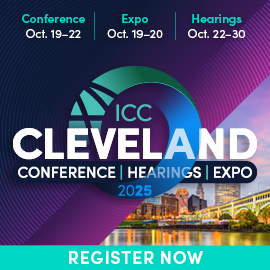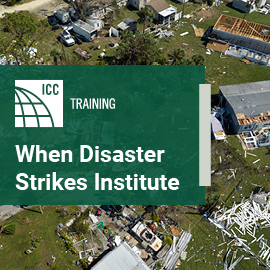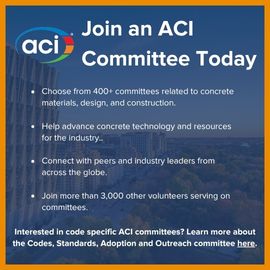
Biguanide: An alternative sanitizer
![]() Biguanide, or more specifically polyhexamethylene biguanide (PHMB), is a swimming pool and spa water sanitizer used as an alternative sanitizer in place of chlorine or bromine. It is a positively charged (cationic) polymer that is normally sold as a liquid product containing 20 percent PHMB.
Biguanide, or more specifically polyhexamethylene biguanide (PHMB), is a swimming pool and spa water sanitizer used as an alternative sanitizer in place of chlorine or bromine. It is a positively charged (cationic) polymer that is normally sold as a liquid product containing 20 percent PHMB.
Like all other swimming pool and spa sanitizers, PHMB is registered with the U. S. Environmental Protection Agency. It is registered in every state for use in residential pools and spas, but public pools and spas often require additional regulatory clearances. Before using PHMB in a public pool or spa, check with the local regulatory authority to determine if clearance is required or has been granted.
Performance and efficacy of the PHMB system is not dependent on the pH of the water and it will not be degraded by sunlight or high water temperature. It is very stable in pools and spas and its concentration does not fluctuate rapidly over time.
PHMB has very mild coagulating properties and therefore may form insoluble particles with some impurities in the water. Subsequently, these insolubles are trapped in the filter as the pool water circulates. As these insolubles deposit in the filter, the backpressure may rise, eventually triggering a backwashing or filter media rinse as dictated by the filter manufacturer’s specifications. In addition, the filter should be chemically cleaned at least twice a season with a PHMB-compatible product. In geographical areas with long or year-round swimming seasons, more frequent chemical cleaning may be required.
Although PHMB removes some of the contaminants that enter the pool/
Certain classes of pool chemicals or treatment processes are incompatible with PHMB. These include, but are not limited to:
- Chlorine/bromine sanitizers
- Copper-based or silver-based algaecides
- High doses of potassium monopersulfate (peroxymonosulfate) oxidizers
- Phosphate-based products including chelators and detergents
- Electrolytic chlorine/bromine generators
- Metal-based systems (ionizers and mineral systems)
- Corona discharge ozone generators on pools or spas
The pool or spa owner should consult with the supplier of PHMB if there is any question about the compatibility of an auxiliary chemical or process.
Application
PHMB is added to the pool/spa by pouring the product in the water evenly around the perimeter with the circulation system running. The core companion products (i.e., hydrogen peroxide and in some cases a compatible algaecide) are also liquids and should be added in a similar manner. The product labels provide a method for calculating the appropriate amounts for a given pool/spa volume.
In a properly maintained pool/ spa, the concentration of PHMB should be maintained between 30 – 50 ppm as a 20 percent product, or 6 – 10 ppm active PHMB. The concentration is measured using a PHMB-specific test kit used as per the manufacturer’s directions. When the level of PHMB falls to 30 ppm or less (usually 10 – 14 days), a “top up” dose of PHMB is added to bring the level back to 50 ppm. The product label and literature provide a method for determining the appropriate dosage. In swimming pools, a weekly or biweekly maintenance dose of a compatible algaecide is typical. The dosing requirements are provided on the product label. The oxidizer, hydrogen peroxide, is typically added on a monthly or weekly basis (monthly dosage is typically to achieve an active ingredient concentration of 27.5 ppm) according to product label directions.
NOTE: Currently, test kits measure PHMB as the product concentration, rather than the active ingredient itself. Since the typical product strength is 20 percent active ingredient, 30-50 ppm product corresponds to 6-10 ppm active PHMB.
As with all treatment regimens, proper housekeeping, maintenance and water chemistry must be maintained when using PHMB sanitizer. Consult with the PHMB manufacturer or authorized dealer for proper water chemistry parameter levels. Although the typical water balance does not affect the efficacy of PHMB, it is necessary to maintain the water balance to protect the equipment, surfaces, and swimmer’s comfort in pools and spas. Typically, the following water chemistry parameter levels are recommended, but each manufacturer’s recommendation may be different.
| pH | 7.2-7.8 |
| Total Alkalinity | 60p ppm – 180 ppm as CaCO3 for pools and spas |
| Calcium Hardness | 150 – 1,000 ppm as CaCO3 in pools 100 – 800 ppm as CaCO3 in spas |
| TDS | Shall not exceed 1,500 ppm above the concentration at start up |
| Metals | No requirements |
| Water Temperature in spas | Not to exceed 104℉ |
Also, as with any pool sanitizer, total dissolved solids will build over time. Periodic partial drainage and replacement with fresh water is required to reduce TDS.
Before converting to/from PHMB to/from another chemical treatment or process, consult your PHMB supplier manufacturer or authorized dealer for instructions.
Precautions
In order to safely use and handle PHMB and hydrogen peroxide products, all individuals involved in their production, distribution, sale, use should be trained and knowledgeable about their properties. Safety information is available on the product label, product SDS and manufacturer’s training materials. This safety information will include product and packaging disposal instructions and spill response information.
Biguanide: What is it?
- Biguanide is an EPA registered organic polymeric sanitizer
- It is used in conjunction with hydrogen peroxide
- Compatible algaecides are used to supplement the algaestatic activity of Biguanide
- Biguanide is measured using a test kit specific for the purpose
- Biguanide and hydrogen peroxide have little effect on water balance
- Water balance has no effect on the efficacy of PHMB in controlling bacteria in pools and spas
- Biguanide is completely soluble in water
- Biguanide performance is not dependent on the pH of the water
- Biguanide is stable to sunlight and elevated pool/spa water temperature
- Biguanide forms insoluble particles with some pool/spa contaminants resulting in the need for more frequent filter cleaning
This article originally appeared in the April 2019 issue of AQUA Magazine and is reprinted with permission.







